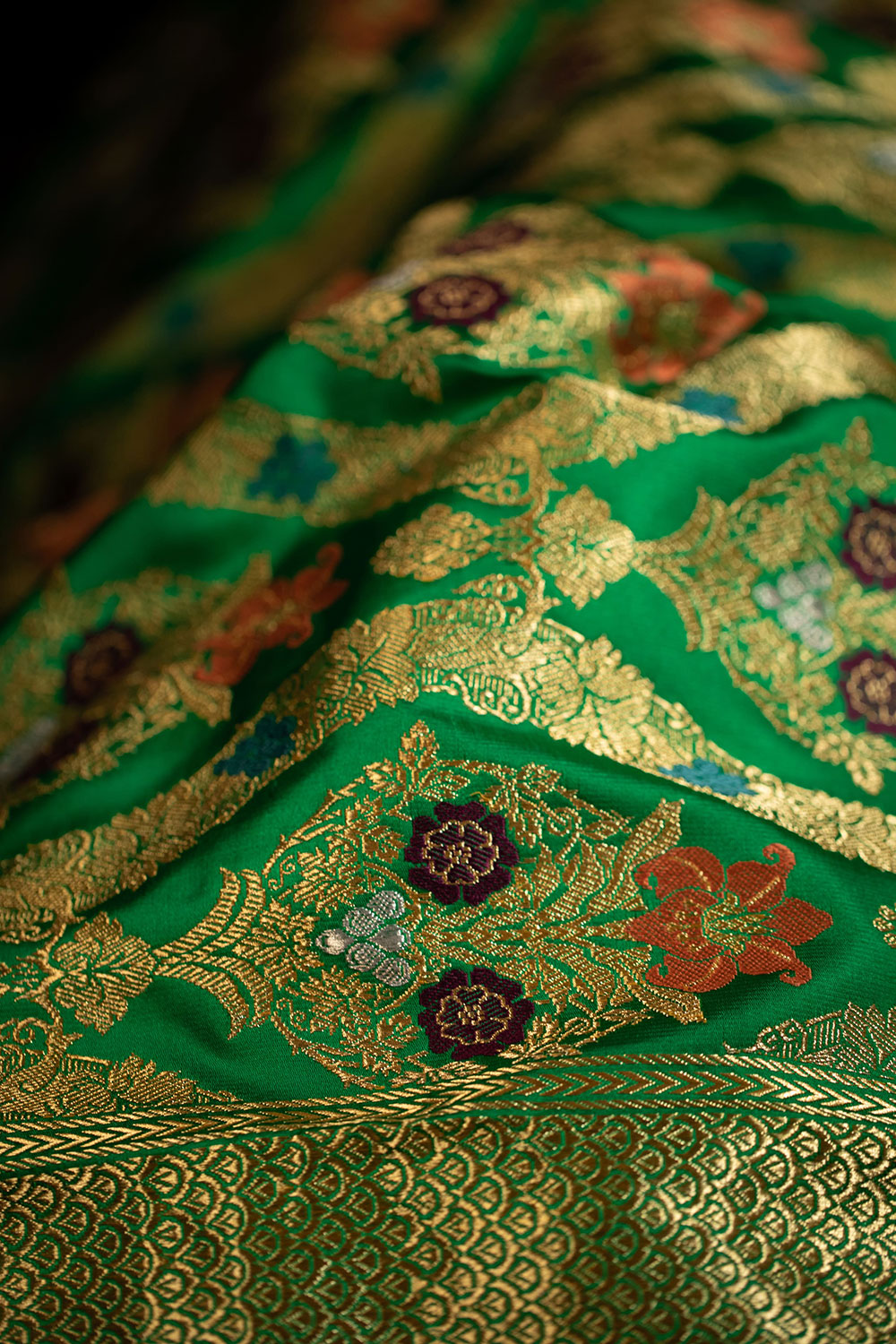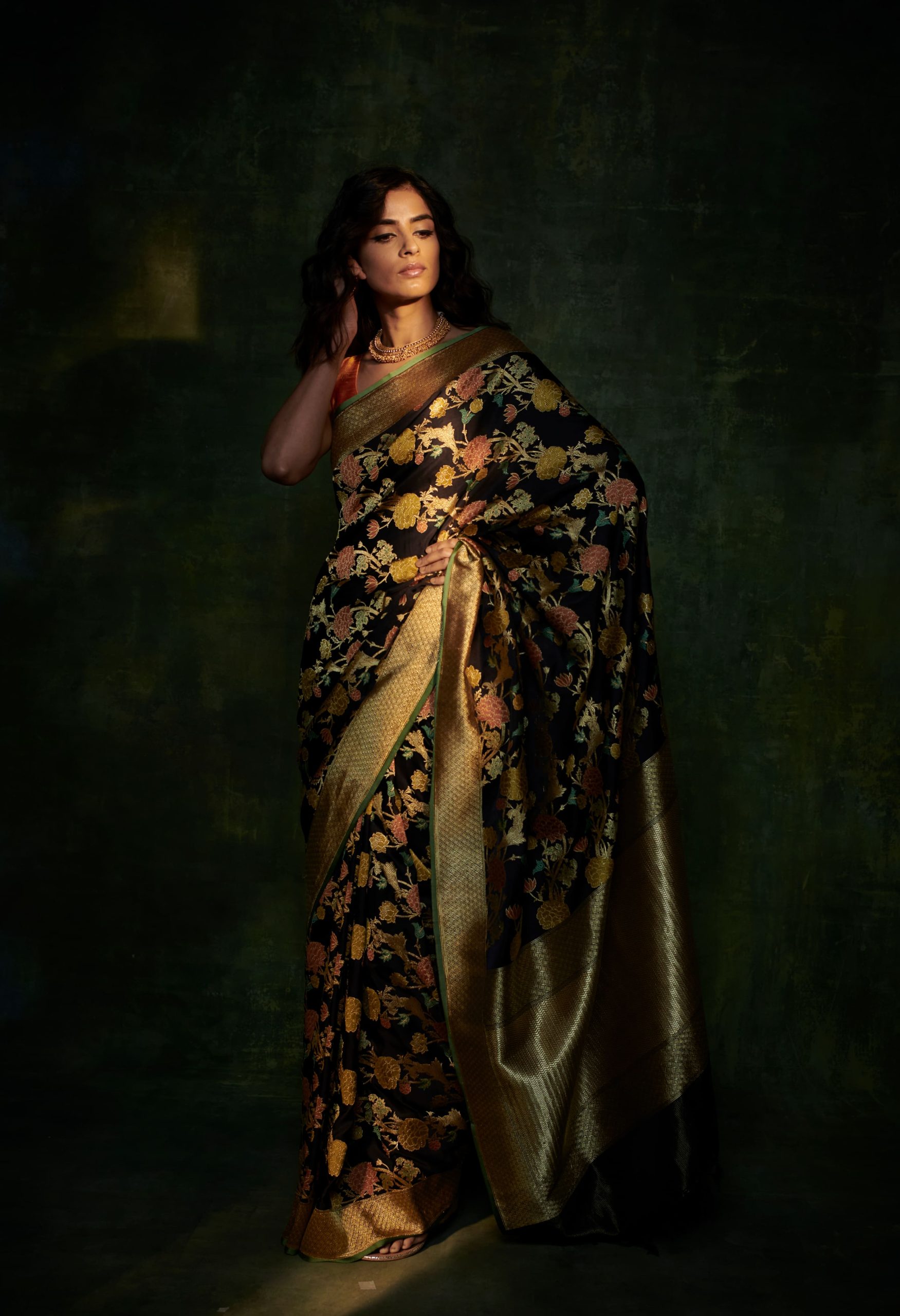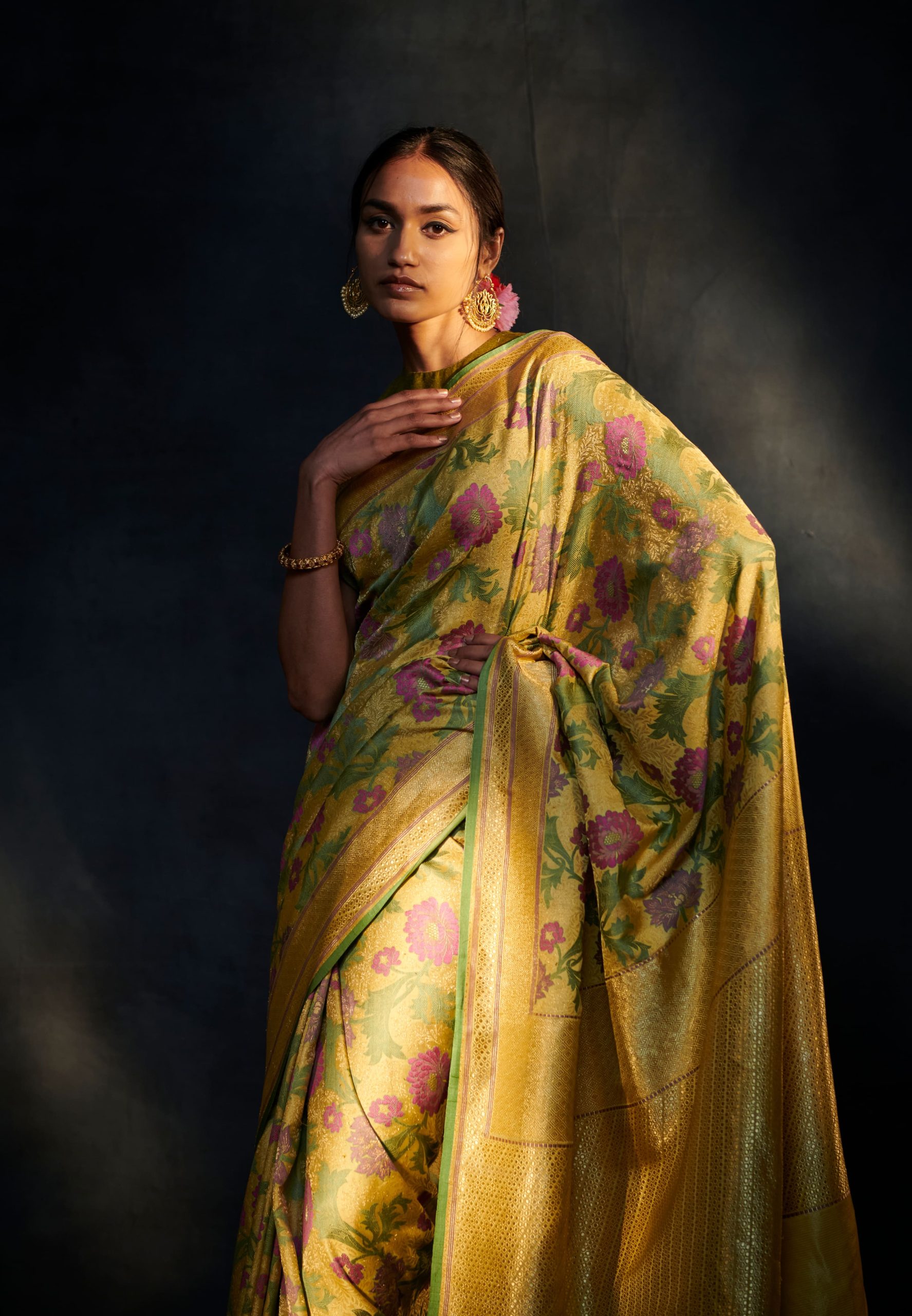The Gyaser was, originally, a brocaded fabric from China made for Tibet and the Buddhist Himalayas. Around the late 19th century, its weaving was introduced to Banaras, since when a distinct tradition has evolved in its handlooms. With motifs and patterns drawn from Buddhist art and iconography, it was used in rituals and ceremonies, furnishings for monasteries as well as used in stitched apparel. These functions continue till date.
GYASER



A heavy brocade with a base of satin, the Gyaser is primarily woven in small width yardages. Swati & Sunaina Gold’s intervention in the tradition is the first known attempt at its transformation into a saree, and was channelled in three ways: the expansion to a width to suit the saree; a focus on its floral and decorative motifs which were themselves set in new compositions and layouts; and achieving a lightweight fabric for ease of drape.
Browser not supported
Modern websites need modern browsers
To enjoy the full experience, please upgrade your browser
Try this one